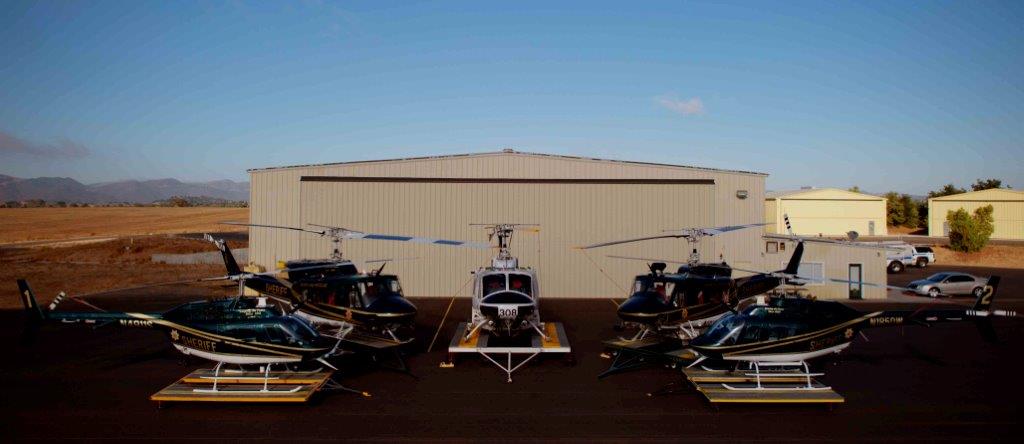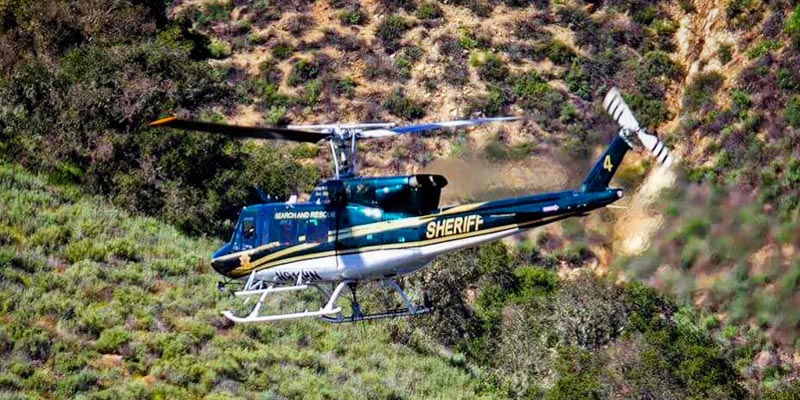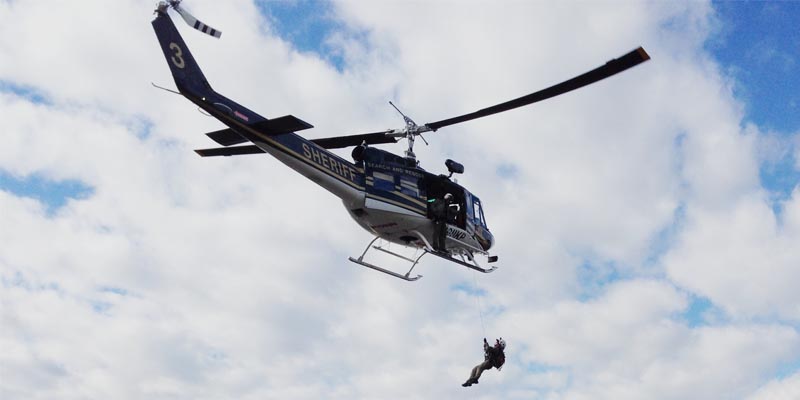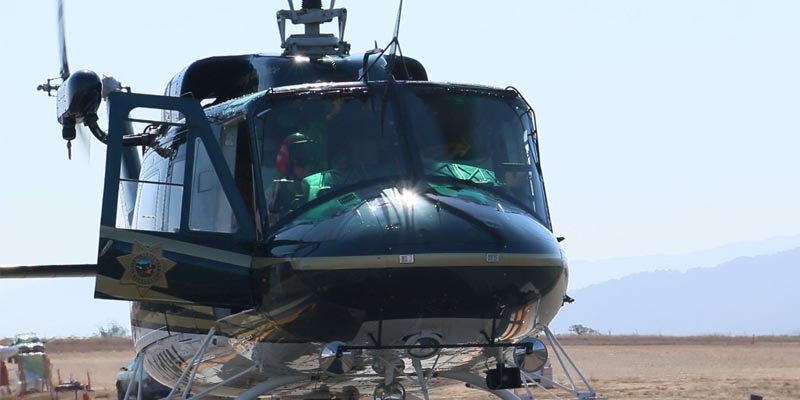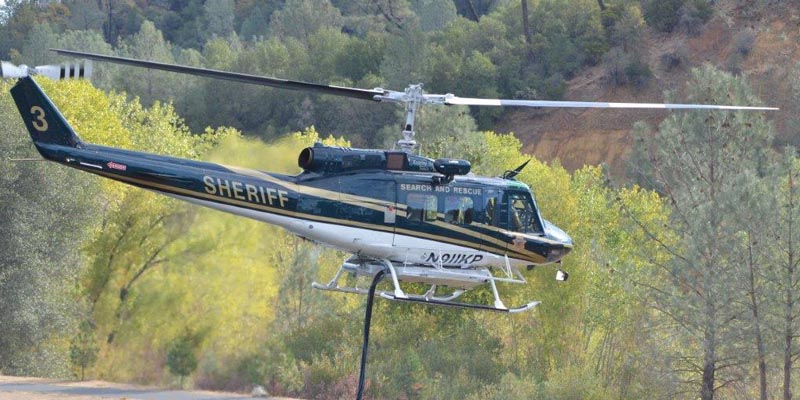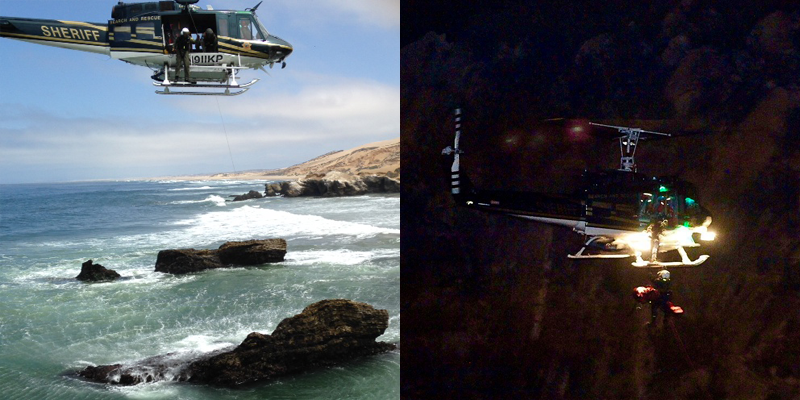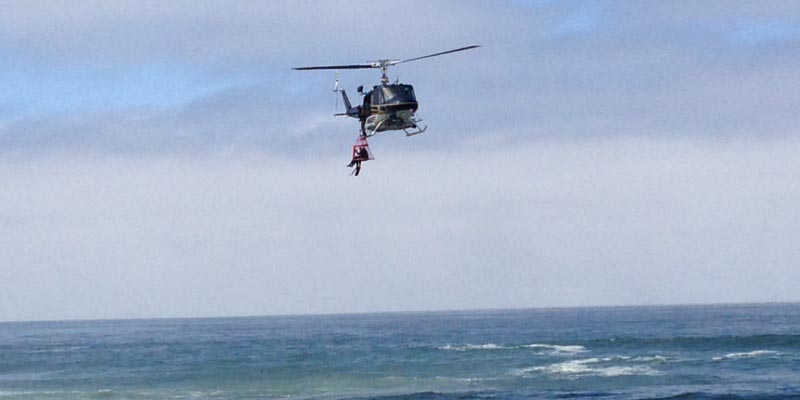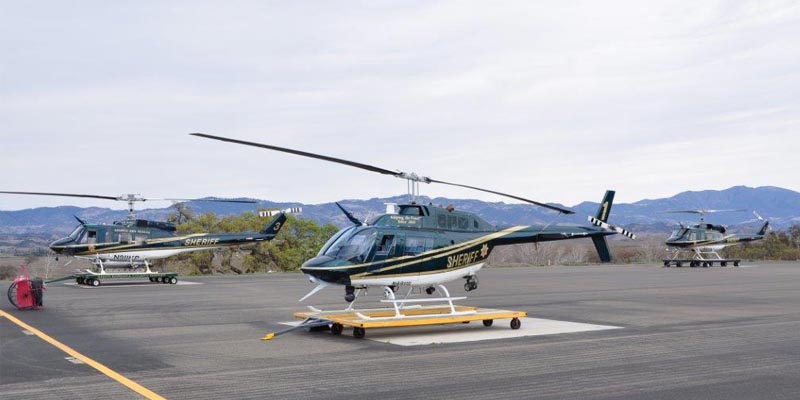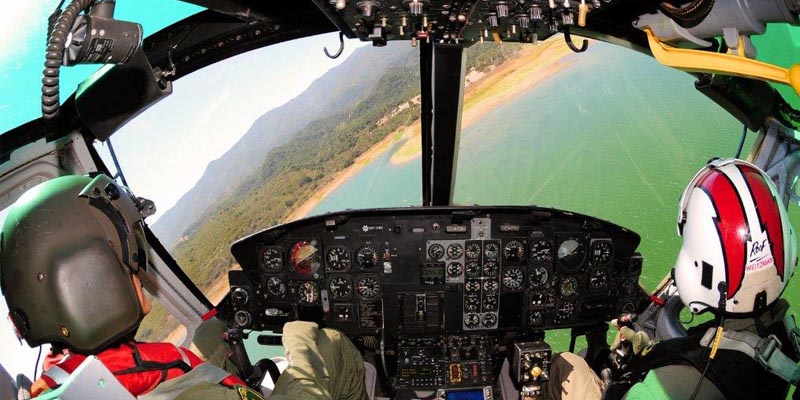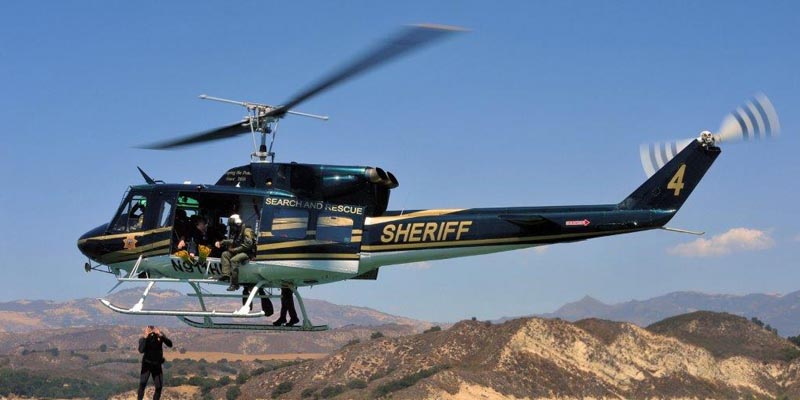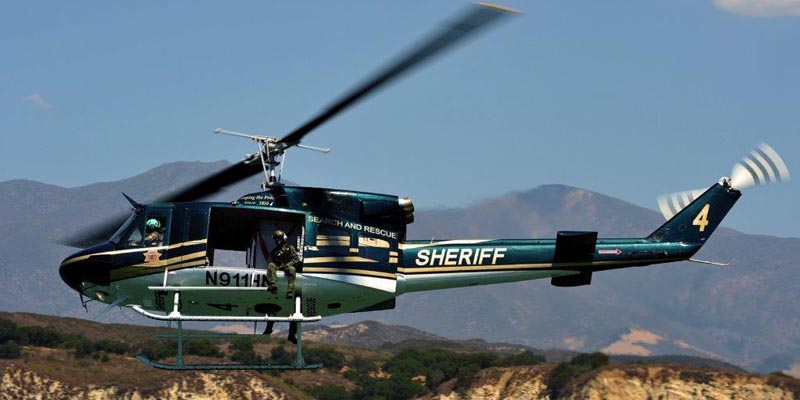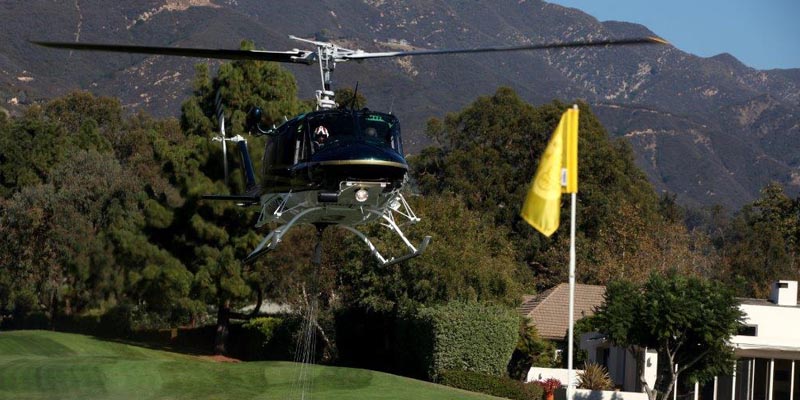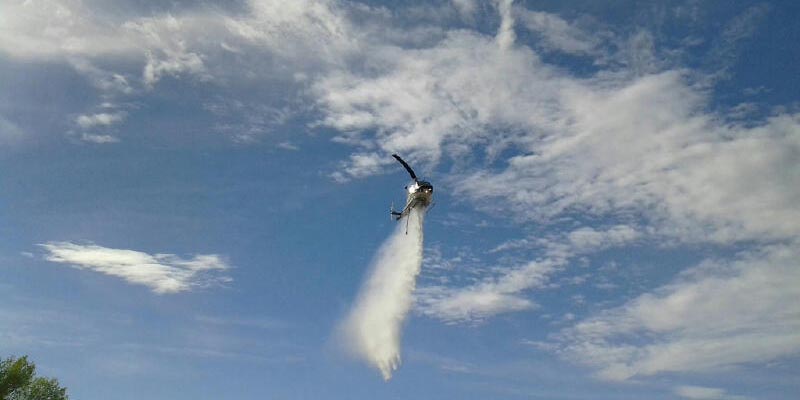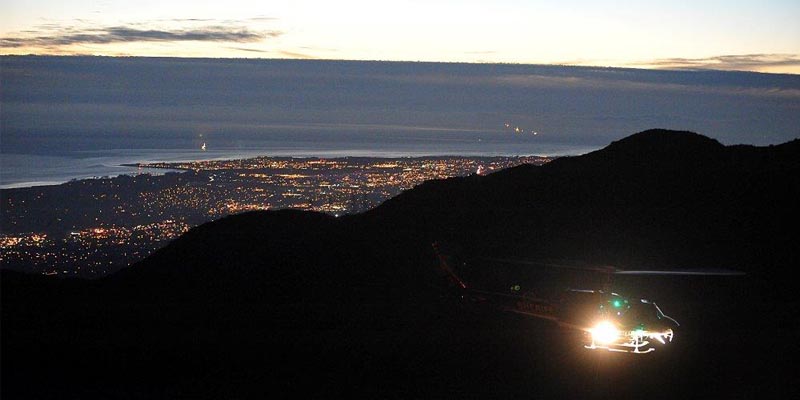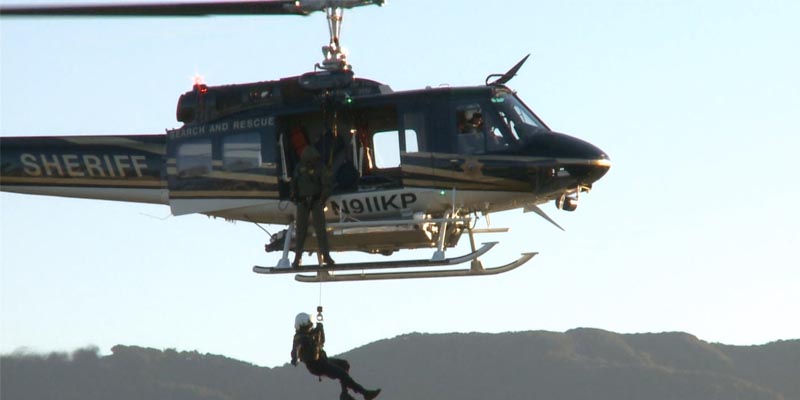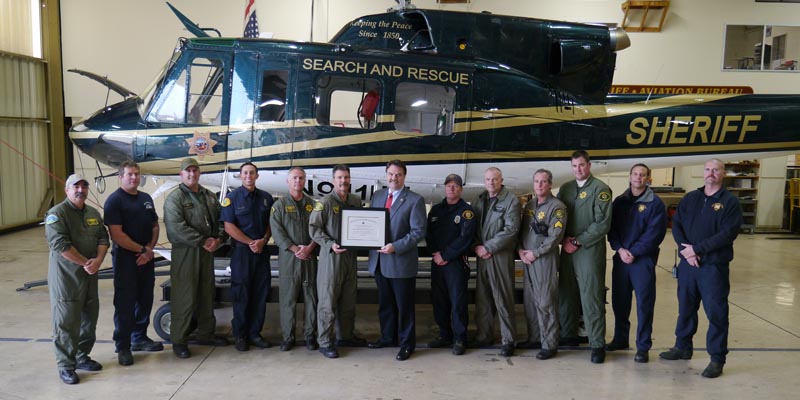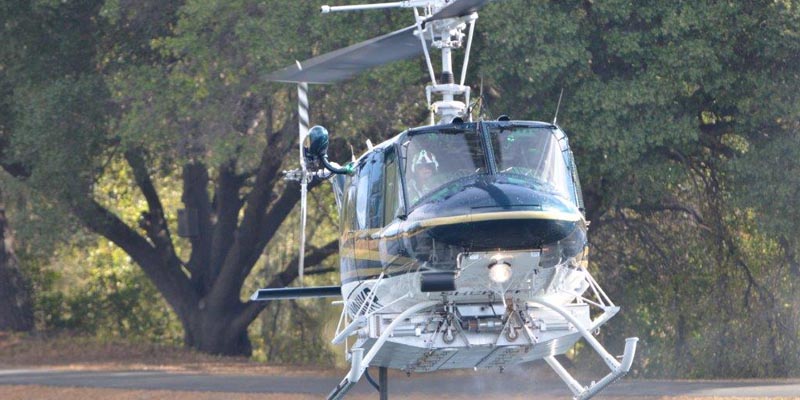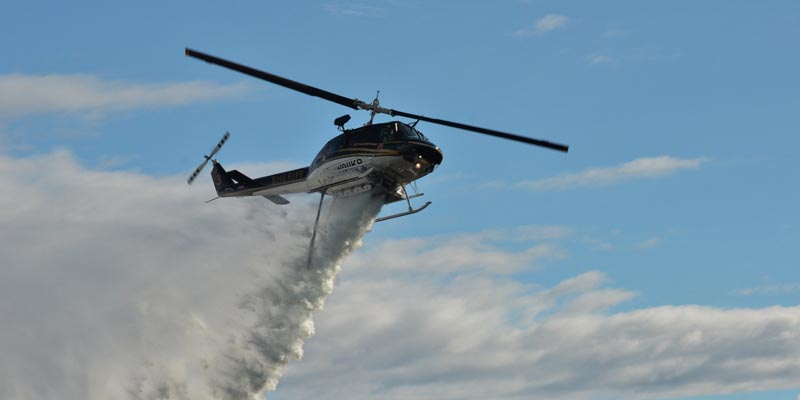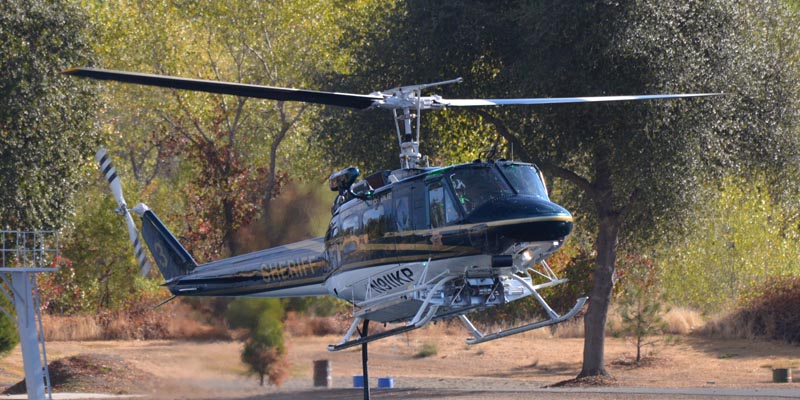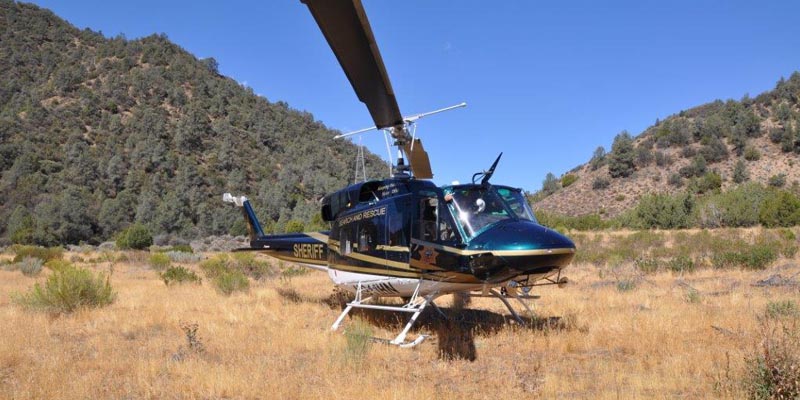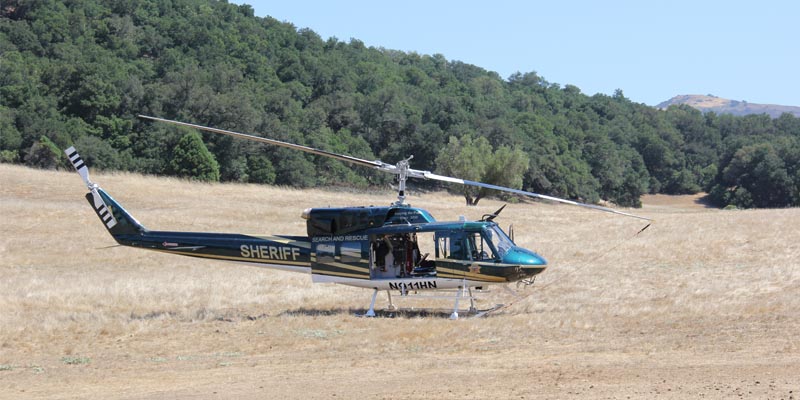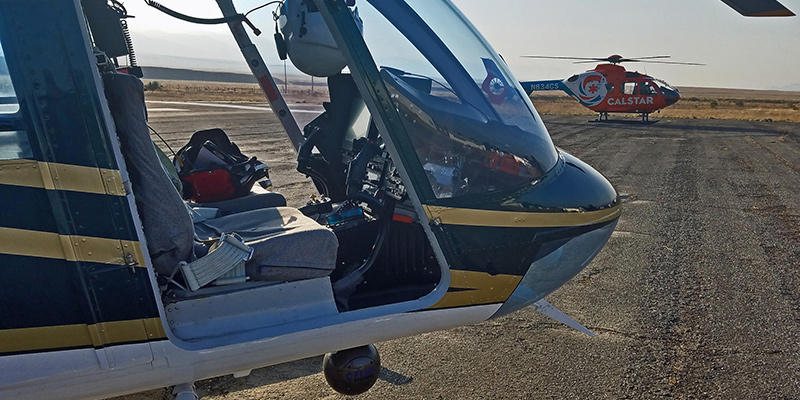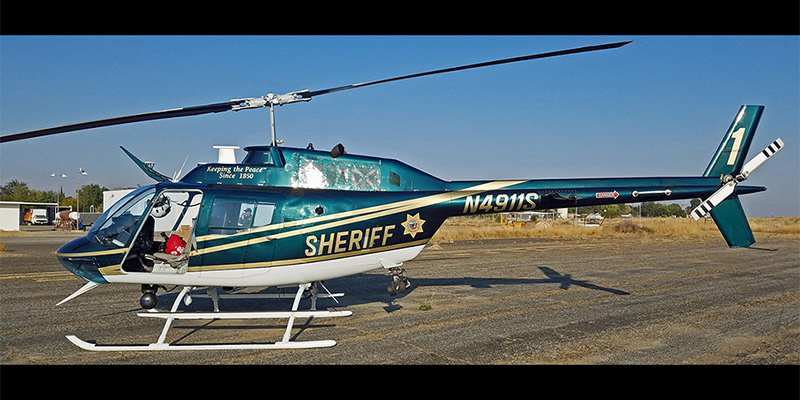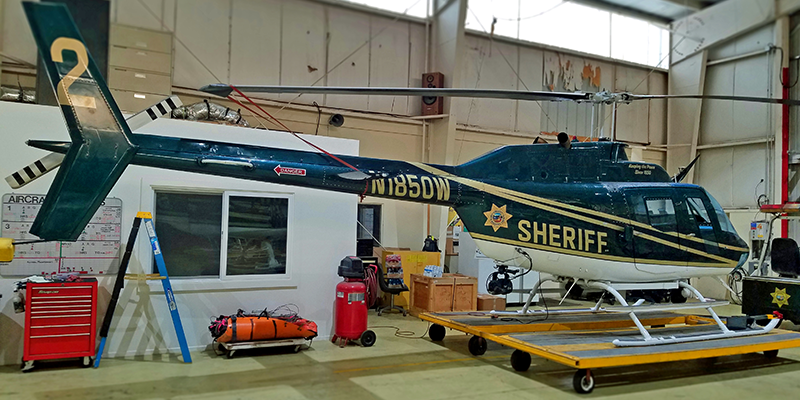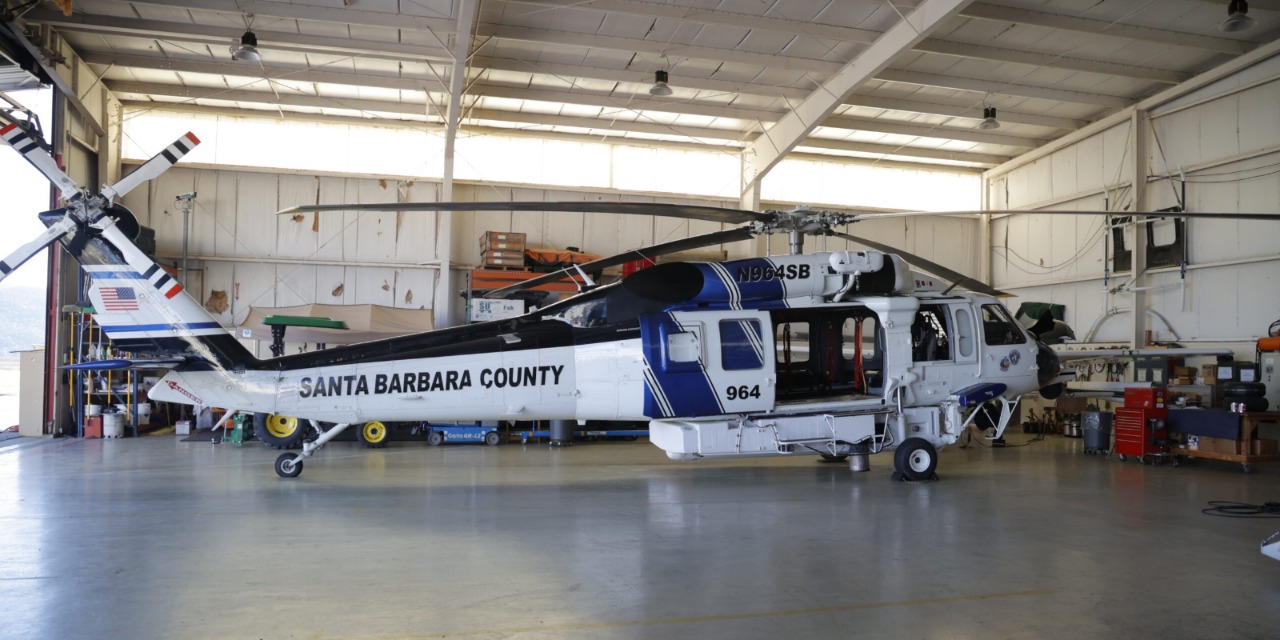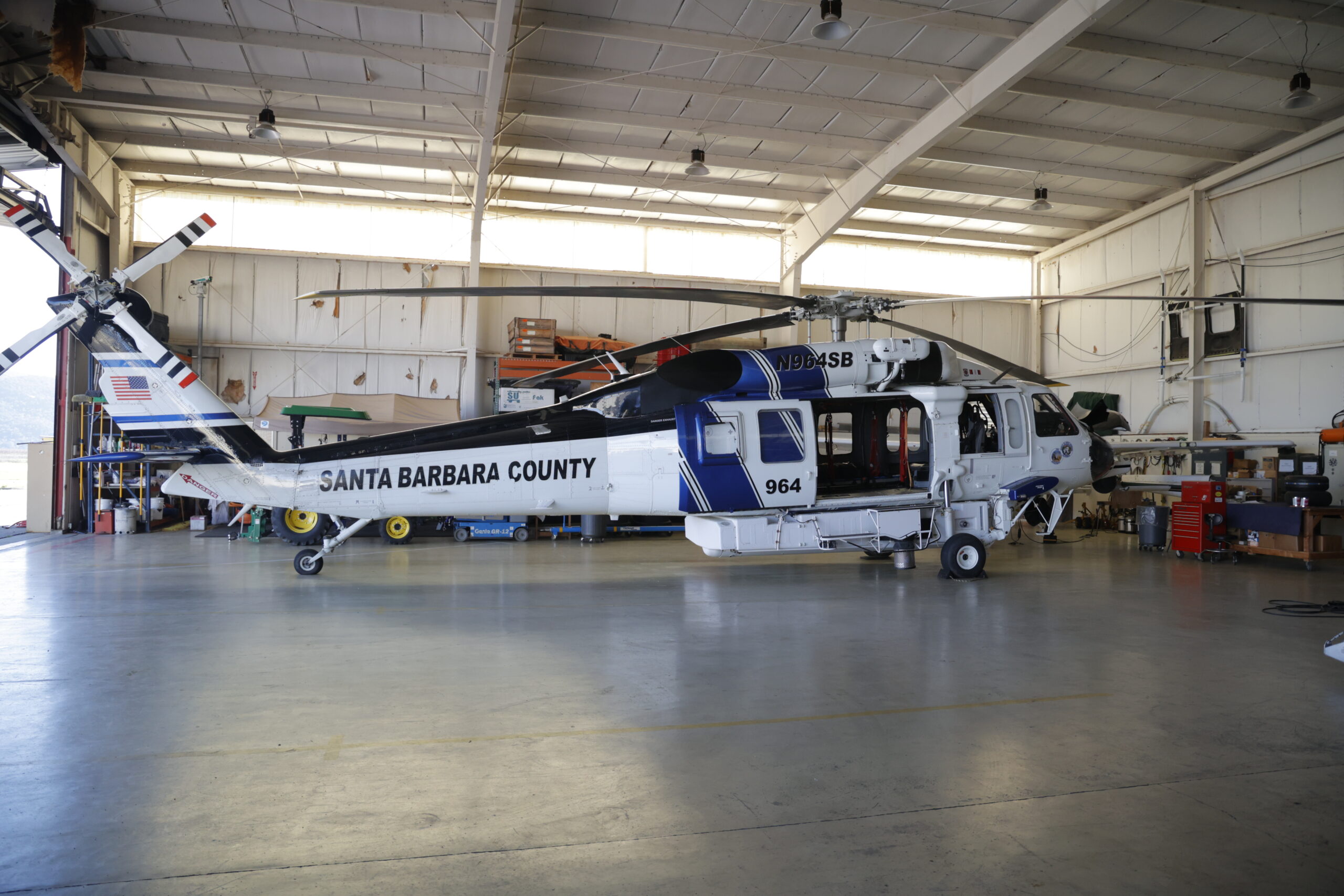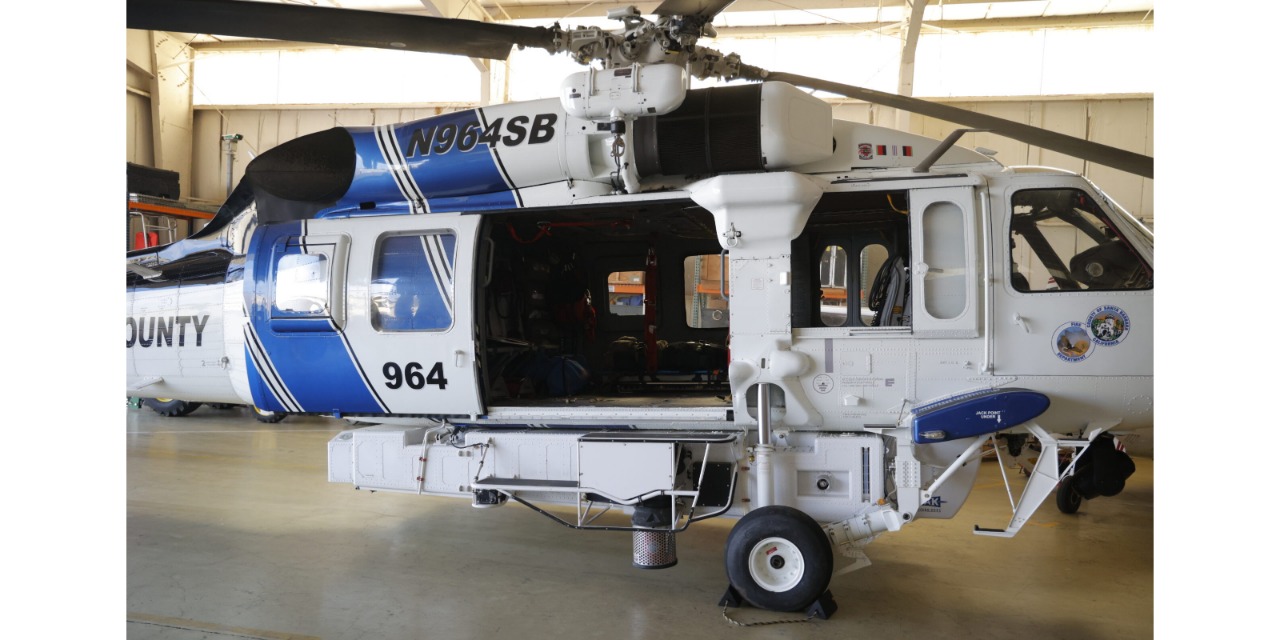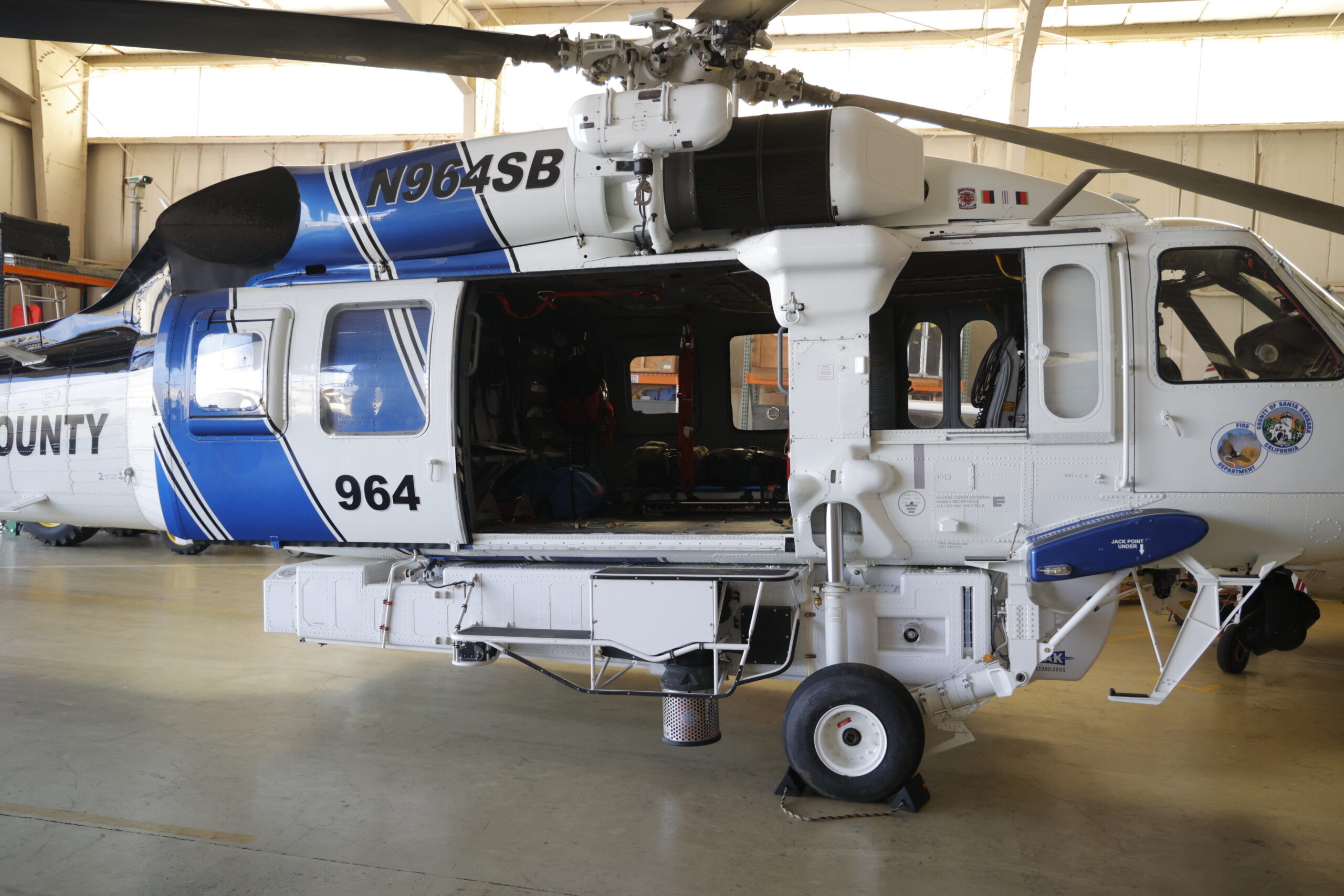Support from the Sky
The Santa Barbara County Air Support Unit (ASU) is a combined Sheriff and Fire Department aviation program based out of the Santa Ynez Airport. ASU serves approximately 2,744 square miles of mostly rural land. This is a mix of municipal/local, State, as well as Federal responsibility areas. In almost all these areas, the Santa Barbara County Sheriff’s Department and the Santa Barbara County Fire Department have direct responsibility and/or contract agreements to provide law enforcement, search and rescue, fire suppression, as well as medical response. A large portion of this county is wilderness and remote areas that are not easily accessible by emergency responders on the ground. In addition, ASU responds to allied agency requests in neighboring counties when their aviation assets are not available. ASU also responds to the Channel Islands which are approximately thirty miles offshore. Additionally, ASU is often asked to assist in California OES and Customs and Border Protection missions.
The county Sheriff and Fire ASU programs started in 1996. The Fire Department started with Copter 308 and Copter 309, which were Retired Bell UH-1H U.S. Army helicopters. Copter 308 is still in service. Copter 309 was replaced with a Sikorsky S70 Firehawk, “Copter 964”. The Sheriff’s Department ASU started with Copter 1 and Copter 2, which were retired Bell OH-58A+ U.S. Army helicopters. In 2012, the Sheriff’s Department put Copter 3, a Bell UH-1H “Super Huey” helicopter into service. Copter 3 had undergone extensive renovations, which were paid for by donations raised by Project Rescue Flight (PRF). In 2009, the Sheriff’s Department obtained Copter 4, a Bell UH-1N twin engine Huey that was retired from the United States Marine Corps. Copter 4 had been in long term storage at Davis Monthan Air Force Base Aviation Maintenance and Regeneration center (AMARG). After receiving Copter 4, it underwent extensive renovations from PRF funding.
The S70 Firehawk was put into service in 2019. This is a low airframe hour, extremely powerful and mission capable helicopter. While recognizing all that it is capable of, it is too heavy to land directly at any in-county hospital due to helipad weight limitations. Copter 964’s primary functions are wildland fires, mass casualty incidents, and over water flights.
Over the years, these aircraft have been a critical asset to the county’s emergency response infrastructure. These aircraft flew countless missions during the Thomas Fire and Montecito debris flow. They are routinely highlighted on local news for hoist rescues, patient transport to the hospital, wildland fires, and assisting Sheriff’s Department personnel during searches. In 2023 our county ASU fleet responded to 144 calls for law enforcement support where they were responsible for ensuring the safety of the public, deputies, and police officers on the ground. They have responded to 36 calls to search for lost or distressed individuals. ASU received 348 requests for medical transport, 58 requests for hoist extraction, 38 calls for water rescue, and were dispatched to 62 fires. In total, county aircraft have dropped a total of 151,010 gallons of water to support firefighting operations. ASU has repeatedly safeguarded property, while keeping law enforcement, firefighters, and members of the public safe.
AIR 1
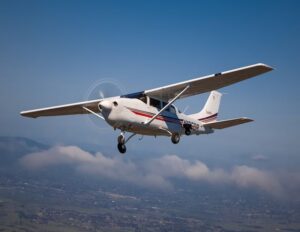
COPTER 2
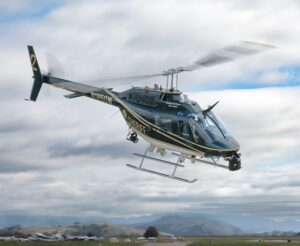
COPTER 3
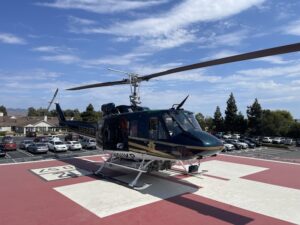
COPTER 4
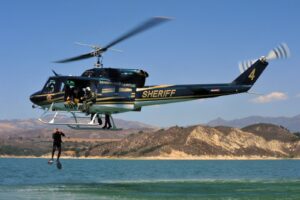
COPTER 308
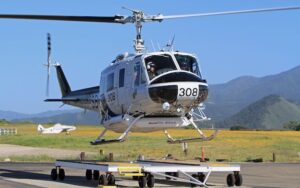
COPTER 964
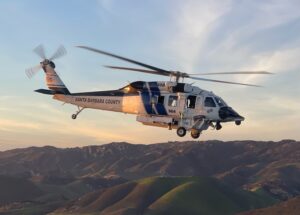
This aircraft is a wonderful example of the capability and safety of more modern aircraft. Although it is still over 22 years old, and has had a storied military history, this aircraft is very reliable and performs extremely well. This is our only county aircraft which has single engine fly away capability. This means that if one of its two engines fail, it should still have the capability to stay in the air and travel to a safe landing area. This capability offers on-board crews a measure of safety and security that cannot be understated.
Copter 964 has also been fitted with a 1000-gallon water tank. When full of fuel in the initial stages of a fire, this helicopter can pick up 600-650 gallons of water. This is in comparison to our legacy Hueys, which start out around 100 gallons. It is also about 40 knots faster in response, delivering significantly more water to the frontlines than ever before. Due to its size and lifting abilities, it can also accommodate numerous patients. It is an invaluable asset for large wildland fires and mass casualty incidents.
Although Copter 964 has given us capabilities never afforded before, there is still a place for the smaller aircraft. Our local hospitals do not have the landing pad capacity to accommodate this larger aircraft. This forces us to utilize nearby landing zones and transfer patients to ground ambulance transport.
ASU staffing
Our county ASU is comprised of many talented individuals. ASU has a Sheriff Lieutenant and a Fire Battalion Chief that serve as ASU managers. We also have a Chief Pilot and three additional pilot positions, which are either Sheriff or Fire Department personnel. We staff two Deputy Tactical Flight Officers (TFO) and two Fire Captain Crew Chiefs. We utilize collateral personnel to fill crew member vacancies. ASU is also staffed by Fire Station 32 crew members and paramedics. How an aircraft is staffed is dependent on the mission to be flown.
ASU pilot qualifications
- Pilots a helicopter in support of general law enforcement and fire prevention work for protection of life and property, prevention, suppression of crime, fires, and apprehension of law violators.
- Pilots a helicopter over all types of terrain; executes missions involving aerial firefighting, transporting firefighters and equipment to and from fires, hauling cargo (both internal and external), and dropping water and retardant on fires from buckets or tanks; flies routine and emergency missions such as patrol, search and rescue, reconnaissance, medical evacuations, disaster mitigation, and administrative flights; supports prescribed burning projects by hauling various aerial ignition devices to ignite prescribed fires.
- Performs routine daily inspections to ensure helicopters remains mission operational, including pre-flight inspection; tracks helicopter flight hours and use to determine schedule for preventive maintenance.
- Provides airborne support for missions including patrol and aerial search and rescue missions, photography and “downlinking” missions, surveillance and intelligence gathering, support of marijuana detection/eradication operations.
- Transports personnel and equipment as required for specialized missions involving units such as SET/SWAT, K-9, Dive Team, or other personnel as deemed necessary.
- Maintains written and computerized flight logs and aircraft and pilot records to comply with FAA regulations and other federal guidelines.
- Reads periodic publications and Air worthiness Directives from the FAA; makes necessary adjustments to helicopter operationbased on information and directives.
- May supervise and direct the work of personnel on the ground that is assisting in operations involving the helicopter.
Must possess and maintain a valid Federal Aviation Administration (FAA) Commercial Airman’s Certificate with rotorcraft-helicopter and instrument rating;
OR
A valid FAA Airline Transport Pilot Certificate with rotorcraft-helicopter rating;
AND
Must have a minimum of 2,500 hours of helicopter flight time as pilot-in-command, including: at least 1,000 hours of mountain pilot-in-command helicopter flight time, and at least 1,500 hours of pilot-in-command turbine engine flight time.
Additional Requirements:
- Must be US Forest Service or CalFire Carded or must be qualified to pass a US Forest Service or CalFire Carding Check Ride. As a condition of continued employment, must obtain card within 1 year of appointment.
- Possession of a valid and current FAA Class II or higher medical certificate.
- Possession of a valid California Class C Driver’s License at the time of appointment.
- Appointees to this classification will be subject to mandatory testing for drugs prior to beginning work; once on the job, incumbents will be subject to mandatory testing for drugs and/or alcohol on a random, reasonable suspicion, post-accident, return-to-duty, and follow-up basis.
Desirable Qualifications:
Knowledge of: basic firefighting principles including fire behavior, weather conditions, safety hazards and precautions; principles of fire behavior, burning and firing methods, and basic air operations; basic fire suppression methods in open and mountainous terrain; local geography and water supply systems; Incident Command System; local topography and area weather conditions; basic first aid; wild land fire behavior and fire weather.
Law enforcement experience, the tactical considerations associated with operational situations, pursuits, containment perimeters, radio communication and coordination with ground units.
Ability to: make tactical decisions in emergency situations regarding the most effective use of available Air Support Unit equipment and/or resources; ability to operate aircraft under Night Vision Goggles.
A valid FAA Certified Flight Instructor, Instrument Flight Instructor and NVG instructor qualification in Rotorcraft Helicopter and Airplane Single Engine Land are highly desirable.

 CountyofSB.org
CountyofSB.org 